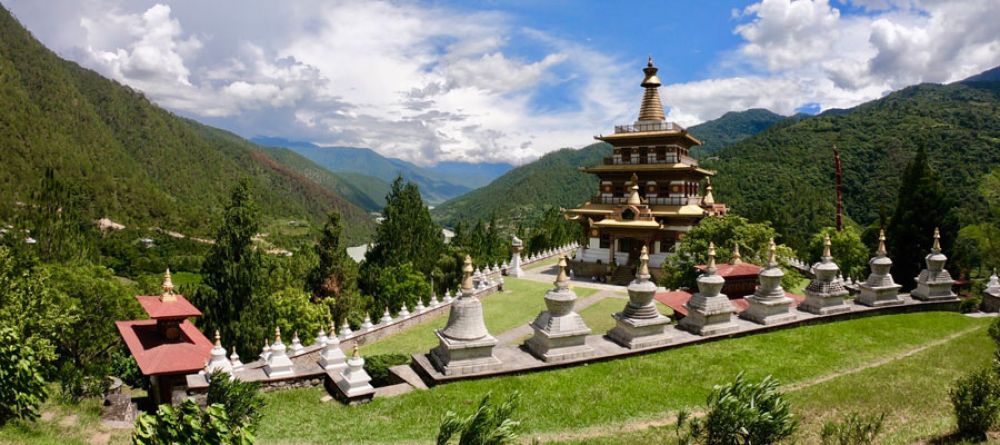

Located in the picturesque Punakha Valley of Bhutan, the Khamsum Yulley Namgyal Chorten stands as a monumental testament to the intricate artistry and rich spiritual traditions of this Himalayan kingdom. Built under the vision of Her Majesty, Queen Mother Ashi Tshering Yangdon Wangchuck, it serves as a classic example of Bhutan's commitment to preserving its cultural heritage.
The Chorten was consecrated in 1999 after nearly a decade of construction. It was created not merely as a tourist destination, but more importantly, to promote peace, stability, and harmony in the ever-changing world. Avoiding the commercialization seen in many religious sites across the globe, Khamsum Yulley presents an undiluted spiritual experience that has attracted devout pilgrims and intrigued travelers for over two decades.
The structure is a quintessential representation of Bhutanese architecture, replete with intricate paintings and statues that embody the teachings of Mahayana Buddhism. It is uniquely designed to present different forms of tantric gods over its four floors, each representing the elements and the teachings of the tantric deities.
Originally, the site attracted a modest number of visitors, mainly comprised of devout Buddhists and those interested in eastern spirituality. However, with the rise of holistic travel trends and the relentless quest for authentic cultural experiences, the Khamsum Yulley Namgyal Chorten has seen an upswing in footfall. Moreover, the Bhutanese government's strict tourism policies that emphasize sustainability and cultural preservation ensure that the Chorten, like other attractions in Bhutan, is never overwhelmed by crowds, retaining its tranquility and spiritual solemnity.
The journey to the Chorten is as remarkable as the destination itself. Visitors undertake a short, invigorating hike through lush rice paddies and up the gentle slopes of the Punakha Valley. The ascent culminates with panoramic views that embody the harmonious balance between nature and the spiritual grace, fostering a deep sense of serenity and contemplation among those who make the trek.
Punakha Valley has been quick to adapt to the latest trends in tourism, offering experiences such as homestays, community visits, and farm-to-table dining that allow travelers to immerse in local Bhutanese life. With the world increasingly valuing sustainable and responsible travel, punakha's offerings have been aligned perfectly with such principles. One can witness a rise in experiential and mindful tourism where facets like yoga retreats, meditation sessions, and guided cultural exchanges at the Khamsum Yulley Namgyal Chorten complex are growing in popularity.
While numbers continue to grow, Bhutan remains a paradigm for sustainable tourism. The revenue from the entry fees to sites like the Khamsum Yulley Namgyal Chorten contributes to the country's unique economic policy of Gross National Happiness, where preservation and promotion of Bhutanese cultural values are held paramount.
In the new era of travel, Punakha, and particularly the Khamsum Yulley Namgyal Chorten, are poised to continue as exemplars of how spiritual and cultural tourism can be integrated respectfully and sustainably into the local economy and global travel markets. For those seeking an encounter with the mystical and the ascetic, this sacred Chorten in Bhutan remains an undiscovered gem that enlightens both the soul and the wanderlust spirit.